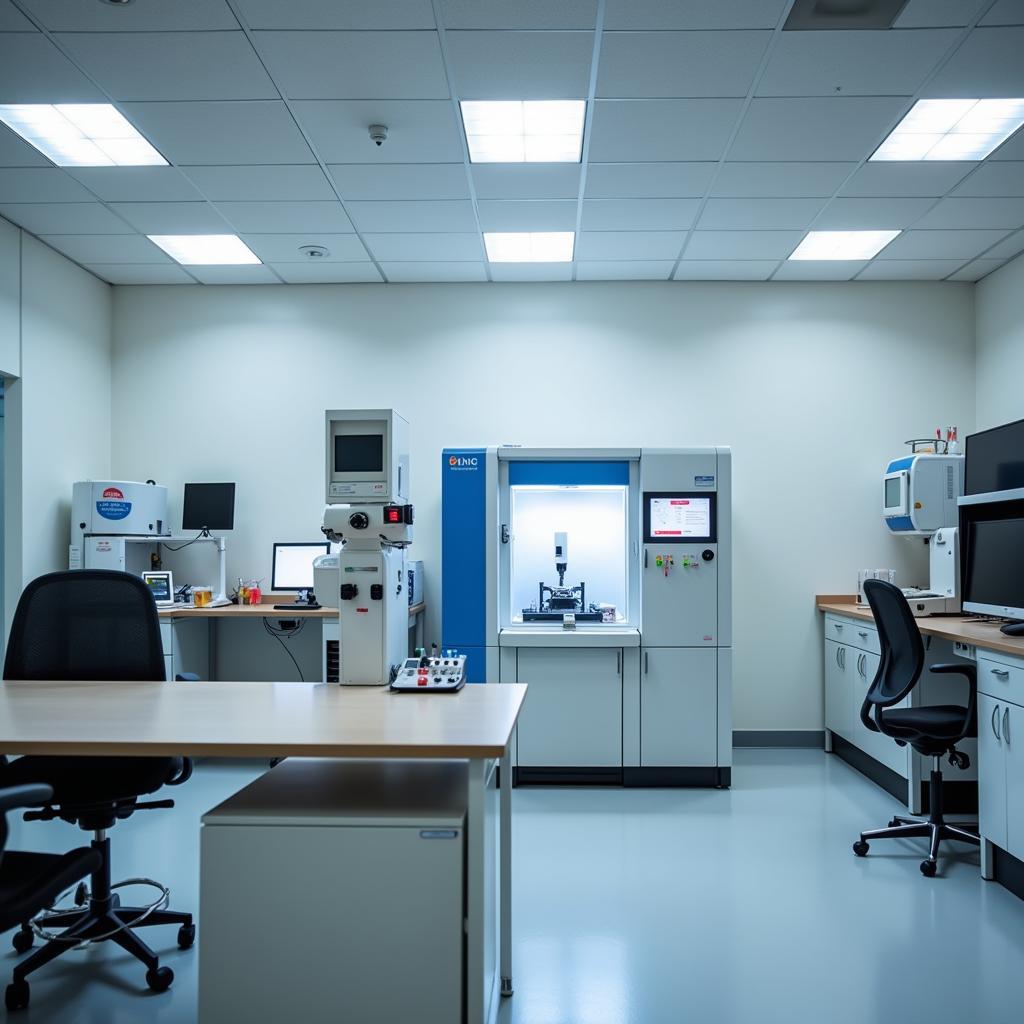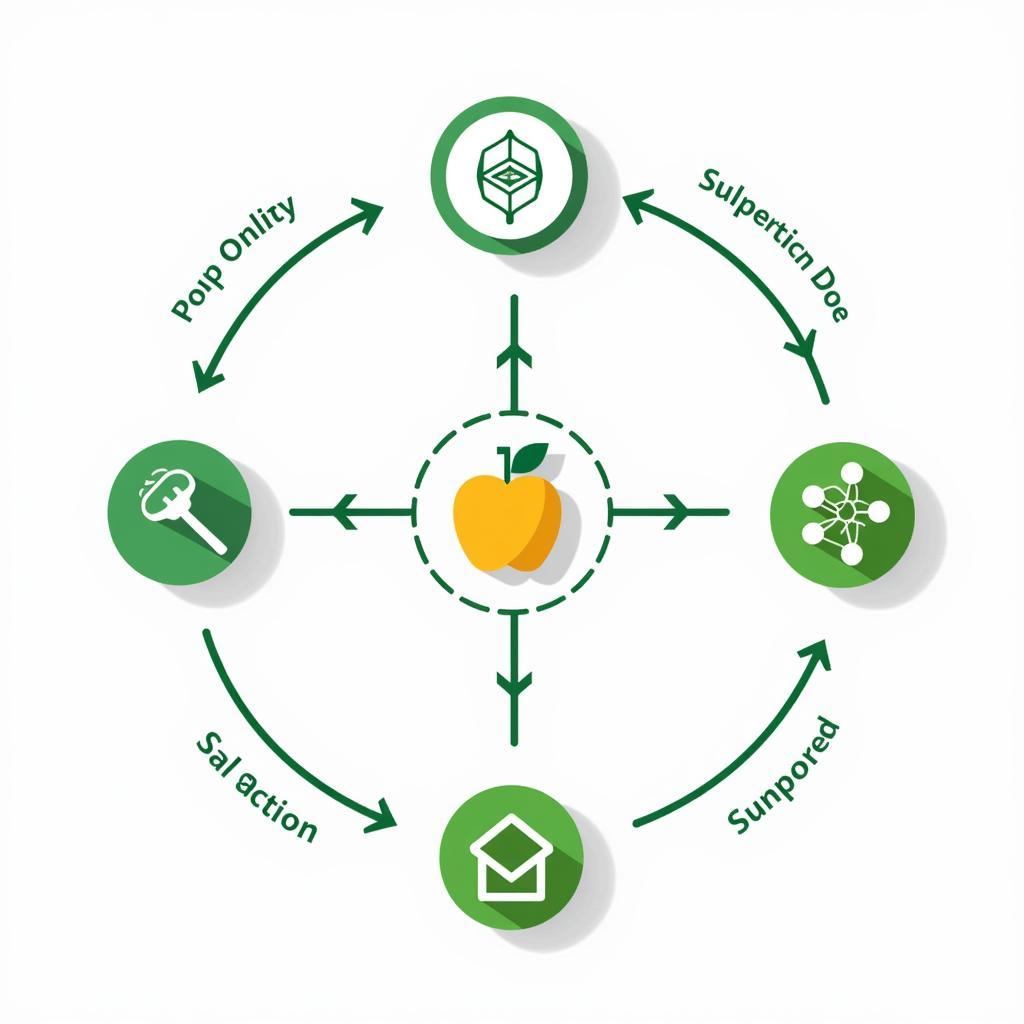The intersection of Food Safety And Technology is revolutionizing how we produce, process, and consume food. This dynamic partnership plays a crucial role in ensuring the health of millions by mitigating risks and enhancing the quality of our food supply chain.
 Food Safety Technology in Lab
Food Safety Technology in Lab
The Rise of Tech-Driven Food Safety
Traditionally, food safety relied heavily on manual inspections and basic testing methods. Today, cutting-edge technologies are transforming this landscape. From farm to fork, these innovations are enhancing transparency, traceability, and overall food safety standards.
Blockchain Technology: Enhancing Traceability and Transparency
Imagine tracing the origin of your food back to the very farm it came from. Blockchain technology makes this a reality. By creating a secure and immutable record of every step in the supply chain, blockchain enables businesses to track products with unprecedented accuracy. This not only helps identify potential contamination sources quickly but also empowers consumers with greater transparency about the food they eat.
 Blockchain in Food Supply Chain
Blockchain in Food Supply Chain
Sensors and the Internet of Things (IoT): Real-Time Monitoring and Control
The Internet of Things is revolutionizing food safety by enabling real-time monitoring of various parameters. Sensors placed strategically within food storage facilities can continuously track temperature, humidity, and other environmental factors crucial for maintaining food freshness and safety. This data can be accessed remotely, allowing for immediate action if any deviations from optimal conditions are detected.
For instance, imagine a scenario where a refrigerator malfunction disrupts the cold chain during transportation. IoT sensors can instantly alert stakeholders, allowing them to take corrective measures and prevent potential food spoilage.
Artificial Intelligence and Machine Learning: Predictive Analytics and Risk Assessment
Artificial intelligence (AI) and Machine Learning (ML) are powerful tools in the fight against foodborne illnesses. By analyzing vast datasets of historical food safety information, these technologies can identify patterns and predict potential outbreaks. This allows for proactive interventions, such as targeted food recalls or adjustments to production processes, to mitigate risks before they escalate.
The Future of Food Safety: Embracing Innovation
As technology continues to evolve, its impact on food safety will only become more profound. Emerging technologies such as CRISPR-Cas9 gene editing and cellular agriculture hold immense potential for enhancing the nutritional value and safety of our food.
For example, food printer machine are being explored for their ability to create personalized meals with specific dietary requirements, while minimizing the risk of cross-contamination. This personalized approach to food production could be particularly beneficial for individuals with allergies or specific dietary needs.
Conclusion
The integration of technology into the realm of food safety is no longer a futuristic concept—it’s the present and future of ensuring a safe and sustainable food supply. By embracing these advancements, we can create a more resilient and secure food system that benefits both consumers and businesses. Embracing the power of technology in food safety is not just an option; it’s a necessity for a healthier and more secure future.
FAQs about Food Safety and Technology
1. How can I find out if a food product has been tracked using blockchain?
Many companies using blockchain technology for food traceability provide QR codes on their products. Scanning these codes using a smartphone app can reveal information about the product’s journey through the supply chain.
2. What are the limitations of using technology for food safety?
While technology offers significant advantages, challenges like data privacy, cybersecurity threats, and the need for widespread adoption must be addressed.
3. How can consumers contribute to food safety?
Consumers play a crucial role in maintaining food safety by practicing proper food handling techniques at home, such as washing hands and surfaces thoroughly, cooking food to safe temperatures, and storing food properly.
4. What are some resources for staying updated on food safety and technology advancements?
Reputable organizations like the World Health Organization (WHO), the Food and Drug Administration (FDA), and the Centers for Disease Control and Prevention (CDC) provide valuable information on food safety and emerging technologies.
5. What is the role of government regulations in ensuring food safety in a technologically advanced food system?
Governments play a crucial role in establishing and enforcing regulations that address the unique challenges and opportunities presented by technological advancements in the food industry. These regulations help ensure that new technologies are implemented safely and responsibly.
Need help navigating the complexities of food safety and technology for your business? Contact us! Phone: 02437655121, Email: [email protected] Or visit us at: 3PGH+8R9, ĐT70A, thôn Trung, Bắc Từ Liêm, Hà Nội, Việt Nam. We have a dedicated customer support team available 24/7. Explore more resources on our website, including information about the best software for food and beverage industry and food manufacturing companies in iowa. You can also find relevant information about insurance for fast food restaurants and frontier food service.